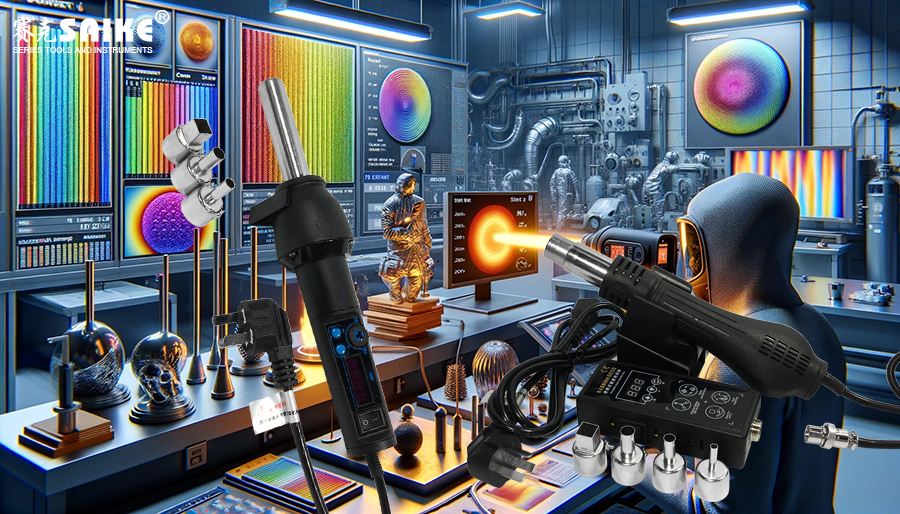
SK-YJ000RFQ-KP 100031
As a convenient handheld heating tool, the hot air gun is widely used in the heating treatment of various materials. Due to the unique physical and chemical properties of different materials, their reactions to hot air gun heating also vary. This article will analyze in detail the reaction characteristics of different materials under hot air gun heating.
I. Metallic Materials
1.Thermal conductivity: Metallic materials have good thermal conductivity, so the heat from the hot air gun can quickly transfer to the interior of the material. For example, aluminum has a thermal conductivity of about 200W/m·K, allowing aluminum materials to heat up quickly under the hot air gun.
2.Thermal expansion: Metals undergo significant thermal expansion when heated. Taking aluminum as an example, its linear thermal expansion coefficient is about 23×10^-6/K, which means that when the temperature rises, the size of the aluminum material will change significantly.
3.High-temperature resistance: Most metals can withstand higher temperatures without damage. However, prolonged high-temperature heating may lead to oxidation or discoloration of the metal surface.
II. Plastic Materials
1.Thermal stability: Plastic materials have poor thermal stability and are prone to softening, deformation, and even melting when exposed to high temperatures. Therefore, when using a hot air gun to heat plastics, special attention should be paid to controlling the temperature and time.
2.Flammability: Some plastic materials may ignite at high temperatures, producing toxic gases. Therefore, when handling plastic materials with a hot air gun, ensure good ventilation and keep away from flammable items.
III. Wood Materials
1.Flammability: Wood is a flammable material that is very sensitive to the high temperature of the hot air gun. Excessive heating may cause the wood to burn or char.
2.Thermal conductivity: The thermal conductivity of wood is relatively poor. Therefore, when heated with a hot air gun, the surface temperature of the wood may rise rapidly, while the internal temperature rises slowly.
3.Deformation and cracking: Wood is prone to deformation and cracking during rapid heating and cooling processes, so it is necessary to carefully control the temperature and heating time of the hot air gun.
IV. Glass Materials
1.Thermal stability: Glass materials have high thermal stability and can withstand higher temperatures without being damaged. However, rapid temperature changes may cause the glass to crack.
2.Thermal conductivity: The thermal conductivity of glass is relatively poor. Therefore, when heated with a hot air gun, the surface temperature of the glass may rise rapidly, while the internal temperature rises slowly. This may cause uneven heating of the glass and generate stress.
3.Changes in optical properties: Excessively high temperatures may cause changes in the optical properties of the glass, such as refractive index and dispersion.
V. Summary
In summary, different materials have different reaction characteristics to hot air guns. When using a hot air gun to process different materials, appropriate parameters such as temperature, time, and distance should be selected according to the properties of the materials to ensure processing effectiveness and safety. At the same time, operators also need to have a certain level of professional knowledge and practical experience to deal with various situations that may arise.


